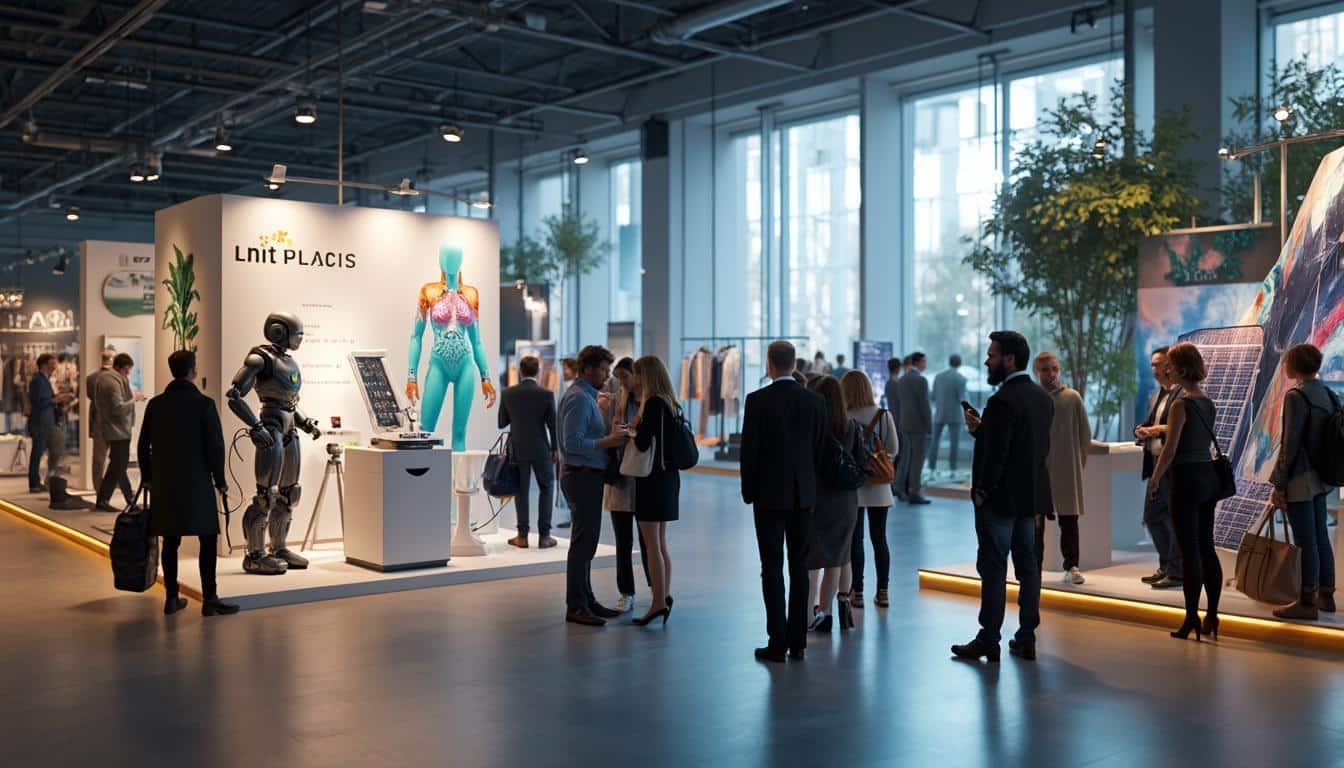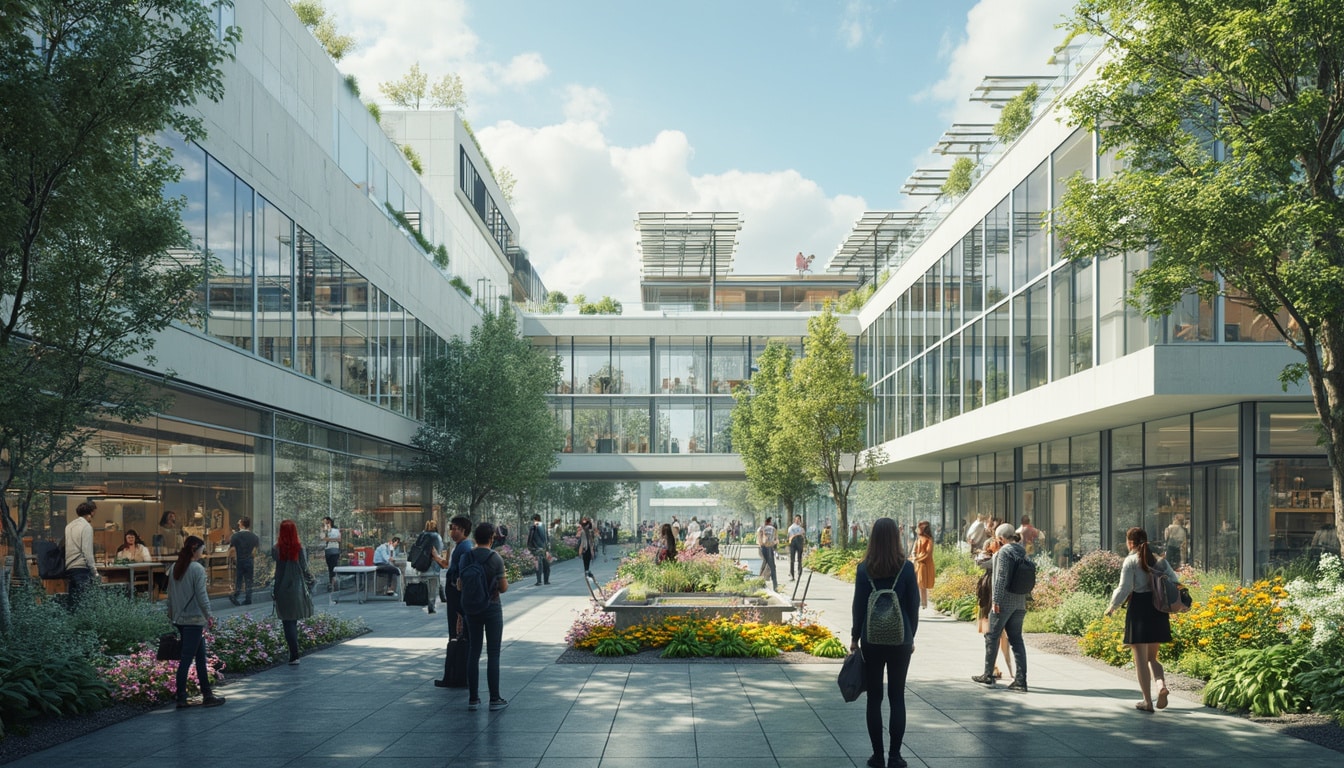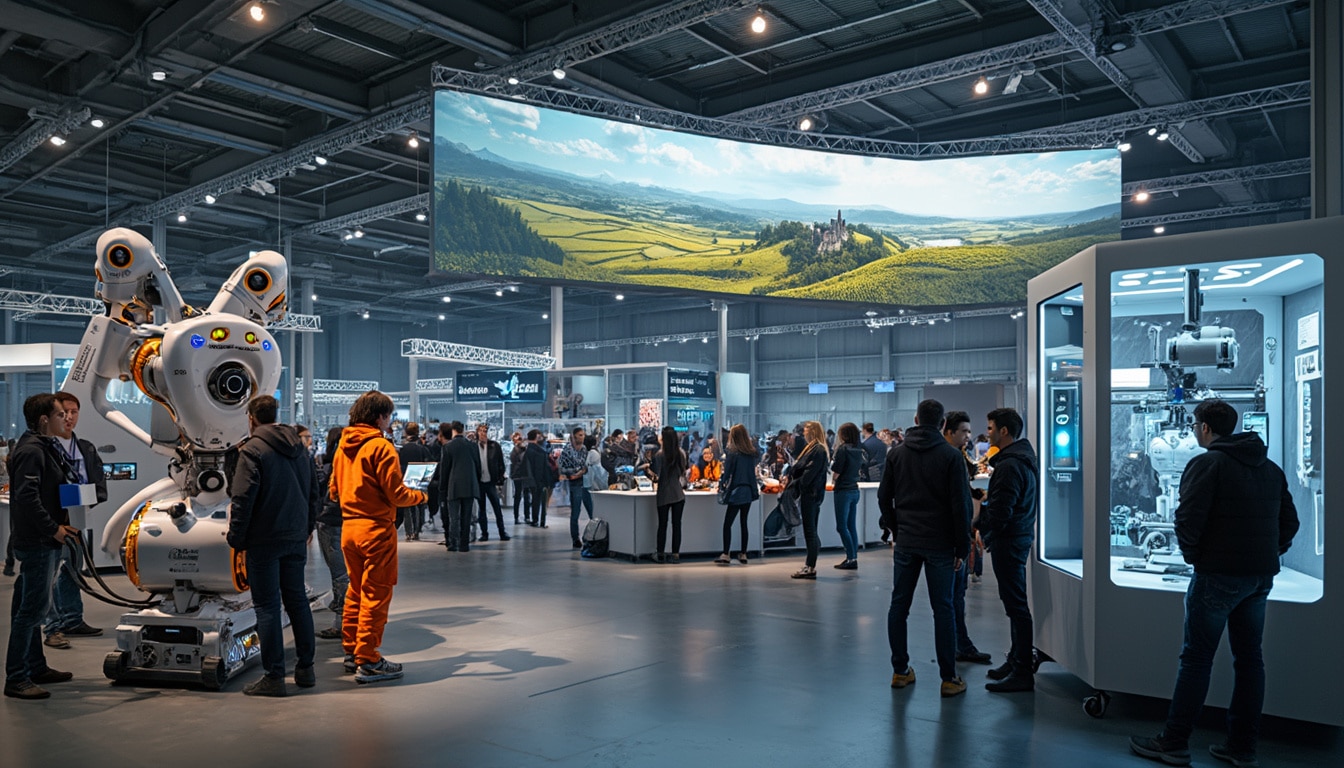« `html
Step into the vibrant world of interior design where every frame tells a story. Discover how a single material can revolutionize your living space. Meet the pioneers who blend tradition with cutting-edge technology.
In a market where personalization and interior decoration are gaining immense popularity, Nielsen stands out as a leading player in the framing industry across France and Europe. Established in 1984, the company has mastered a unique expertise that marries artisanal craftsmanship with technological and commercial innovations. By introducing aluminum into the framing scene, Nielsen has created designs that are both aesthetically pleasing and highly functional. Their state-of-the-art extrusion press in Rheda Wiedenbruck, Germany, allows for the production of complex profiles with increased productivity. Each profile undergoes a surface treatment, such as anodization, to enhance its final appearance. Whether you’re a traditional framer or a modern DIY enthusiast, Nielsen offers a comprehensive range of products tailored to meet diverse needs and preferences.

The framing industry has long been a staple in both residential and commercial spaces, providing not only functionality but also aesthetic appeal. However, in recent years, this sector has witnessed a significant transformation fueled by innovation. From the integration of advanced materials to the adoption of digital technologies, framing companies are redefining the boundaries of what’s possible. This article delves into the various ways the framing sector is embracing innovation, reshaping its landscape to meet contemporary demands.
Table of contents
ToggleHow are new materials revolutionizing framing?
The introduction of new materials has been a game-changer for the framing industry. Traditional frames, predominantly made of wood, are now complemented or even replaced by alternatives like aluminum, acrylic, and composite materials. These innovations offer enhanced durability, flexibility, and a modern aesthetic that appeals to a broader audience.
One notable example is the use of aluminum in frame manufacturing. Aluminum frames are not only lightweight and resistant to corrosion but also allow for more intricate and customizable designs. This material’s adaptability enables framers to produce sleek, minimalist frames that cater to contemporary tastes, as well as more elaborate styles for classic interiors.
Additionally, the development of sustainable materials has gained traction. Eco-friendly frames made from recycled or renewable resources are becoming increasingly popular among environmentally conscious consumers. These materials reduce the industry’s carbon footprint while maintaining the high quality and aesthetic standards that customers expect.
The shift towards innovative materials also extends to functionality. For instance, frames embedded with smart technology can now offer features like integrated lighting or digital displays, transforming traditional frames into multifunctional art pieces.
What role does technology play in modern framing?
Technology has become integral to the evolution of the framing industry, driving efficiency, customization, and customer engagement. From digital design tools to automated manufacturing processes, technology is streamlining operations and enhancing the overall quality of framing services.
One of the most significant technological advancements is the use of computer-aided design (CAD) software. CAD allows framers to create precise and customizable frame designs with ease. Customers can visualize their frames in real-time, making the selection process more interactive and tailored to individual preferences.
Moreover, the adoption of automation in production lines has increased the speed and accuracy of frame manufacturing. Automated cutting and assembly machinery ensure that each frame meets exact specifications, reducing errors and waste. This efficiency not only lowers production costs but also shortens delivery times, benefiting both businesses and customers.
Another technological innovation is the integration of online platforms for ordering and customization. Customers can now design their frames online, selecting materials, colors, and finishes from a digital interface. This convenience enhances the customer experience, making high-quality framing accessible to a wider audience.
Furthermore, advancements in augmented reality (AR) are set to revolutionize the way consumers interact with frames. AR applications can allow customers to visualize how different frames would look in their spaces before making a purchase, bridging the gap between imagination and reality.
How are framing companies adapting to sustainable practices?
As environmental concerns become increasingly prominent, framing companies are actively adopting sustainable practices to minimize their environmental impact. This shift towards sustainability is not only beneficial for the planet but also resonates with a growing base of eco-conscious consumers.
One of the primary ways companies are embracing sustainability is through the use of recycled materials. By incorporating recycled metals, plastics, and wood into their frames, companies reduce the demand for virgin resources and lower waste production. These materials are often just as durable and aesthetically pleasing as their traditional counterparts.
In addition to material choices, companies are optimizing their production processes to be more energy-efficient. Implementing energy-saving technologies and reducing waste in manufacturing not only cuts costs but also decreases the overall carbon footprint of the business.
Another important aspect is the adoption of eco-friendly packaging. Sustainable packaging solutions, such as biodegradable or recyclable materials, ensure that the products are delivered with minimal environmental impact. This approach aligns with broader sustainability goals and enhances the company’s reputation among environmentally aware consumers.
Furthermore, framing companies are committing to ethical sourcing. Ensuring that materials are sourced from suppliers who adhere to sustainable and ethical practices reinforces the company’s commitment to environmental responsibility. This transparency builds trust with customers who prioritize sustainability in their purchasing decisions.
What are the latest trends in frame design?
The framing industry is continually evolving, with new design trends emerging to meet changing consumer tastes and interior design styles. These trends often reflect broader shifts in culture, technology, and lifestyle, influencing how frames are designed and utilized in various spaces.
One of the latest trends is the move towards minimalist and sleek designs. Clean lines, neutral colors, and understated aesthetics are popular choices for modern interiors. These frames complement a wide range of decor styles, from contemporary to industrial, providing a versatile option for showcasing artwork and photographs.
Another significant trend is the emphasis on customization. Consumers increasingly seek frames that reflect their personal style and the specific characteristics of their art or photos. Customizable options, including adjustable sizes, interchangeable colors, and unique materials, allow for a more personalized framing experience.
The integration of mixed materials is also gaining popularity. Combining different materials, such as wood and metal, creates visually interesting frames that add depth and texture to any space. This trend caters to those who appreciate eclectic and avant-garde design elements.
Additionally, geometric and asymmetrical shapes are becoming more prevalent. Moving away from traditional rectangular and square frames, designers are experimenting with circular, triangular, and irregular shapes to make a bold statement and add a modern twist to classic framing.
Lastly, the incorporation of interactive elements is on the rise. Frames that can display digital content, change colors, or adapt to different lighting conditions are pushing the boundaries of what frames can do, making them not just decorative but also functional pieces of art.
How are framing businesses leveraging digital marketing?
In an increasingly digital world, framing businesses are turning to digital marketing strategies to reach a broader audience and enhance their brand presence. Effective use of online platforms and digital tools allows these businesses to connect with customers in innovative ways.
One key strategy is the use of social media marketing. Platforms like Instagram, Pinterest, and Facebook are ideal for showcasing frame designs, sharing customer testimonials, and promoting special offers. High-quality images and engaging content attract followers and drive traffic to the business’s website.
Content marketing also plays a crucial role. By creating informative and inspiring content, such as blog posts, tutorials, and design guides, framing companies establish themselves as experts in the field. This not only builds trust with potential customers but also improves search engine rankings, making it easier for people to find their services online.
Search engine optimization (SEO) is another essential aspect of digital marketing. By optimizing website content with relevant keywords and ensuring a user-friendly experience, framing businesses can improve their visibility on search engines. This leads to increased organic traffic and higher conversion rates.
Email marketing campaigns are also effective for maintaining customer relationships and driving repeat business. Personalized emails that feature new products, exclusive discounts, and useful framing tips keep the audience engaged and encourage them to make additional purchases.
Moreover, pay-per-click (PPC) advertising allows framing businesses to target specific audiences with precision. By investing in PPC campaigns on platforms like Google Ads, companies can attract potential customers who are actively searching for framing services, thereby increasing the likelihood of conversions.
What impact does customer experience have on the framing industry?
In the framing industry, customer experience is paramount. Providing a seamless and enjoyable experience can differentiate a business from its competitors and foster long-term loyalty among customers.
One critical aspect of customer experience is the level of personalization offered. Customers today expect products and services tailored to their specific needs and preferences. By offering customizable frame options and personalized consultations, framing businesses can meet these expectations and enhance customer satisfaction.
Another factor is customer service. Responsive and knowledgeable customer support ensures that clients feel valued and supported throughout their purchasing journey. Whether it’s answering queries, providing design advice, or addressing concerns, excellent customer service can significantly impact a customer’s perception of the business.
The integration of technology also enhances the customer experience. Online design tools, virtual consultations, and robust e-commerce platforms make it easier for customers to browse, customize, and purchase frames from the comfort of their homes. This convenience is increasingly important in a fast-paced digital world.
Moreover, timely delivery and efficient order processing are essential components of a positive customer experience. Ensuring that frames are delivered promptly and in pristine condition builds trust and encourages repeat business.
Finally, engaging customers through loyalty programs and incentive schemes can strengthen relationships and promote brand loyalty. Rewards for repeat purchases, referrals, and social media engagement create a sense of community and appreciation among customers.
How is sustainability shaping the future of framing?
Sustainability is becoming a driving force in the framing industry, influencing everything from material selection to production processes. As consumers become more environmentally conscious, framing businesses are prioritizing sustainable practices to meet this demand and contribute to a greener future.
One significant way sustainability is shaping the industry is through the use of recycled and renewable materials. By opting for materials like recycled metals, sustainably sourced wood, and biodegradable plastics, framing companies reduce their environmental impact. These choices not only appeal to eco-minded consumers but also align with global sustainability goals.
In addition to material choices, framing businesses are adopting energy-efficient production methods. Implementing technologies that reduce energy consumption and minimize waste during manufacturing helps lower the carbon footprint of operations. This commitment to energy efficiency is often complemented by certifications and standards that validate the company’s sustainable practices.
Another important aspect is the focus on product longevity. Designing frames that are durable and timeless ensures that they remain functional and aesthetically pleasing for years, reducing the need for frequent replacements and minimizing waste.
The packaging of frames is also undergoing a sustainability transformation. Companies are increasingly using eco-friendly packaging materials, such as recycled cardboard, biodegradable plastics, and minimalist designs that use fewer resources. Sustainable packaging not only protects the product during transit but also reinforces the company’s commitment to environmental responsibility.
Moreover, some framing businesses are exploring circular economy models, where products are designed for reuse, repair, and recycling. This approach extends the lifecycle of frames and reduces the overall environmental impact by keeping materials in use for as long as possible.
Finally, transparency in sustainability efforts is crucial. Consumers are more likely to support companies that openly communicate their sustainability goals and achievements. By providing clear information about their sustainable practices, framing businesses build trust and loyalty among their customer base.
What innovations are driving the future of framing?
The framing industry is poised for significant advancements driven by continuous innovation. Emerging technologies and forward-thinking approaches are setting the stage for the future of framing, making it more efficient, customizable, and sustainable.
One of the most promising innovations is the development of smart frames. These frames incorporate digital technologies, allowing them to display digital art, integrate with smart home systems, or even change their appearance through adjustable elements. Smart frames offer a dynamic alternative to traditional frames, providing versatility and interactive features that cater to modern lifestyles.
Another key innovation is the use of 3D printing in frame manufacturing. 3D printing enables the creation of complex and intricate designs that would be difficult or impossible to achieve with traditional manufacturing methods. This technology allows for greater customization and experimentation with unique shapes and materials, pushing the boundaries of frame design.
The implementation of augmented reality (AR) and virtual reality (VR) technologies is also transforming the framing experience. AR applications allow customers to visualize how different frames will look in their spaces before making a purchase, enhancing the decision-making process. VR can offer immersive design experiences, enabling users to explore virtual showrooms and interact with frame designs in a more engaging way.
Advancements in material science are contributing to the creation of innovative frames that combine aesthetics with functionality. New materials with enhanced properties, such as self-cleaning surfaces, scratch resistance, and improved thermal regulation, are being integrated into frame designs. These materials ensure that frames not only look good but also perform better over time.
Moreover, the adoption of machine learning and artificial intelligence (AI) is optimizing various aspects of the framing industry. AI algorithms can analyze customer preferences and trends to predict popular frame styles, enabling companies to stay ahead of the curve. Additionally, AI-driven automation in manufacturing processes increases precision and efficiency, reducing costs and improving product quality.
Finally, the collaboration between framing companies and artists or designers is fostering a culture of innovation. By working together, these professionals bring fresh perspectives and creative ideas to frame design, resulting in unique and captivating products that stand out in the market.
What challenges does the framing industry face in its pursuit of innovation?
While innovation offers numerous benefits, the framing industry also faces several challenges in its pursuit of progress. Addressing these obstacles is crucial for companies to successfully integrate new technologies and practices into their operations.
One significant challenge is the high cost of innovation. Investing in new materials, technologies, and processes often requires substantial financial resources. Small and medium-sized framing businesses may find it difficult to allocate the necessary funds for research and development, hindering their ability to compete with larger, more financially robust companies.
Another challenge is the resistance to change within the industry. Traditional framing practices are deeply rooted, and some professionals may be hesitant to adopt new methods and technologies. Overcoming this resistance requires effective change management strategies, including training and education to demonstrate the benefits of innovation.
Additionally, the rapid pace of technological advancements can make it difficult for framing companies to keep up. Staying abreast of the latest trends and technologies requires continuous investment in learning and adaptation, which can be resource-intensive.
Moreover, maintaining quality while implementing new processes and materials poses a challenge. Integrating innovative solutions must not compromise the craftsmanship and durability that customers expect from framing products. Striking the right balance between innovation and quality is essential for sustaining customer trust and satisfaction.
The environmental impact of new materials and technologies is another concern. While many innovations aim to enhance sustainability, some materials and processes may inadvertently increase environmental harm. Framing companies must carefully evaluate the ecological footprint of their innovations and strive to adopt truly sustainable practices.
Lastly, navigating regulatory requirements can be complex. Introducing new materials and technologies may necessitate compliance with various standards and regulations, which can vary by region. Ensuring adherence to these guidelines is essential to avoid legal issues and maintain operational legitimacy.
How can framing companies foster a culture of innovation?
Fostering a culture of innovation is essential for framing companies to stay competitive and relevant in a rapidly evolving market. Creating an environment that encourages creativity, experimentation, and continuous improvement can lead to groundbreaking advancements and sustained growth.
One effective way to cultivate innovation is by promoting collaboration among employees. Encouraging team members from different departments to work together can generate diverse ideas and solutions. Cross-functional teams can leverage varied perspectives to tackle challenges and develop innovative products and processes.
Investing in employee training and development is another critical factor. Providing opportunities for staff to learn about the latest technologies, materials, and industry trends equips them with the knowledge and skills needed to drive innovation. Regular training sessions, workshops, and access to industry conferences can inspire creativity and keep the workforce engaged.
Moreover, framing companies should create a safe space for experimentation. Allowing employees to explore new ideas without the fear of failure encourages risk-taking and creative thinking. Recognizing and rewarding innovative efforts, even if they don’t always succeed, fosters a mindset of continuous improvement and adaptability.
Leadership plays a crucial role in promoting a culture of innovation. Leaders must champion innovation initiatives and demonstrate a commitment to embracing change. By setting a clear vision and providing the necessary resources, leaders can motivate their teams to pursue innovative projects and initiatives.
Furthermore, establishing innovation labs or dedicated teams focused on research and development can drive continuous innovation. These specialized units can experiment with new technologies and materials, developing prototypes and exploring novel applications without disrupting the core operations of the business.
Finally, fostering a culture of open communication ensures that ideas flow freely within the organization. Encouraging feedback, suggestions, and constructive criticism helps identify potential areas for innovation and improvement. Transparent communication channels enable employees to share their insights and collaborate effectively on innovative projects.
The framing industry is undergoing a transformative phase driven by relentless innovation. From the adoption of new materials and advanced technologies to the implementation of sustainable practices, framing companies are redefining the industry’s landscape. Despite facing challenges such as high costs and resistance to change, the sector’s commitment to innovation ensures its continued relevance and growth.
By fostering a culture of collaboration, investing in employee development, and embracing cutting-edge technologies, framing businesses can navigate the complexities of innovation and emerge as leaders in the market. As consumers increasingly seek personalized, sustainable, and technologically integrated framing solutions, the industry’s ability to innovate will be pivotal in meeting these evolving demands.
For those interested in exploring further innovations across various sectors, consider reading about exploring the vineyards of Patrimonio in Haute-Corse, the city of innovation defying the laws of gravity, or SeaClear pioneering robotic innovations for ocean depths exploration. Additionally, Grenoble Alpes University continues to lead in innovation, and AI-assisted reverse engineering showcases cutting-edge advancements that are shaping the future.














